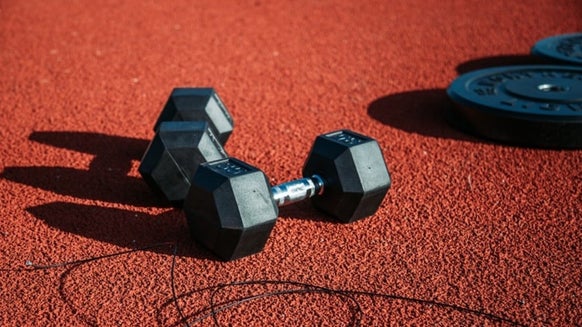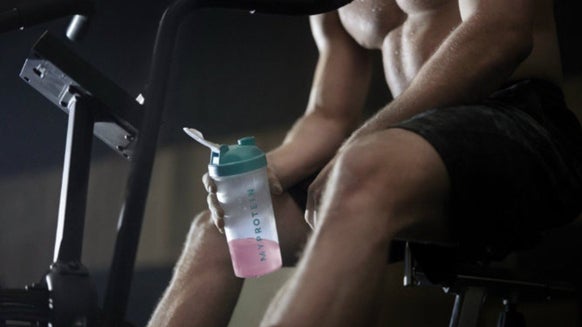What Is HICA? | Supplement Studies & Dosage

If you have spent any time at all researching supplements and looking up ingredients on your favorite protein powders and BCAAs (which I highly recommend everyone do), you have most likely come across an amino acid known as leucine.
For those of you who haven't, let me explain it quickly. All the protein we eat is broken down into various amino acids that have different functions in our body. For those of us who are looking to get bigger and stronger, one amino acid in particular is very important in this respect, and you guessed it, it’s leucine.

It is the main branch chain (and essential) amino acid that stimulates muscle protein synthesis and is important for everybody who is looking to build muscle or lose fat. Knowing how leucine works is imperative when trying to comprehend what the subject of this article is, since it is actually a metabolite of leucine.
Much like HMB (the other metabolite of leucine that has recently become popular as a standalone supplement), HICA makes up only a small percentage of leucine that we eat, as it is broken down in our body in one of two pathways. Some of the leucine we consume is metabolized into HMB and stops there to be utilized by the body, while the rest is metabolized into KIC which is then further broken down into HICA to also be used by the body in various ways.
In this article we will be discussing how HICA could benefit some athletes and everyday fitness enthusiasts, studies that show promise as well as how much to take for the most benefit.
What Is HICA?
Scientifically known as ?-hydroxyisocaproic acid or leucic acid, HICA is a metabolite of leucine, meaning when we metabolize leucine in our body (and sometimes through fermentation) it gets broken down into HICA and other metabolites.
With leucine being the main stimulus for positive muscle anabolism (the growth of new muscle) and preventing muscle catabolism (or the breakdown of muscle), researchers believed its metabolites might be even more powerful in these respects.
When researching HMB (a different metabolite of leucine), it was found in many studies that while it is only as effective as leucine for stimulating MPS, it was extremely effective at preventing catabolism (1). It wasn't long until HMB was marketed as a great diet aid for those who want to preserve muscle and lose weight. This also showed promise that HICA could have similar or even better benefits than leucine much like HMB does.
What The Studies Show Us
It was only eight years ago when the first real study (that wasn't a pilot study) on HICA was published, conducted on a team of soccer players who were well conditioned muscular and cardiovascular wise.
The athletes were split into a placebo group and a HICA group, with the placebo group consuming three servings of 500mg of maltodextrin (a simple sugar) daily and the HICA group consuming three servings of 500mg of HICA powder daily, for four weeks. They then went about their routines including multiple cardiovascular exercises a week relating to their sport as well as two weight training sessions per week.
Their diets were consistent throughout the weeks with their protein consumption around 1.6 grams per kilogram of body weight (or around 0.8 grams per pound of body weight), which is considered low for most bodybuilders who are trying to gain muscle mass.
At the end of the four weeks, the HICA group gained 0.4 kgs (almost a pound) of lean mass in their lower body while the placebo group lost 0.15 kgs. Both groups gained no extra body fat which means the HICA group gained almost a pound of lean mass in their legs while the placebo group lost muscle mass in a month. The HICA group also recorded little to no DOMS (delayed onset muscle soreness) throughout the month while the placebo group recorded a normal amount (2).
Unfortunately strength was not increased in either group though, meaning HICA in short-term supplementation isn't very good at building strength, but is quite good at stimulating hypertrophy.

The only other study on HICA came before the one we just discussed and was a pilot study done on professional wrestlers.
The results were fairly similar over a 6 week period. The wrestlers in the study gained close to two pounds of muscle while noting a decrease in overall muscle soreness compared to the placebo group (3). This is why HICA isn't currently as popular of a supplement as leucine or HMB, as these were the only two studies conducted on it, with the first pilot study not even being published.
While these studies are promising, neither of them had a leucine or HMB group, meaning we do not know if HICA is more effective or simply as effective as taking leucine or HMB.
Who Should Take HICA?
However, even with just two studies we can reach a few conclusions about who should be supplementing with HICA, as it appears to stimulate muscle hypertrophy well but doesn't help you build strength.
Most athletes that are not physique based most likely will not benefit from HICA, as an increase in mass without strength gain will only hinder progress. Pure leucine will most likely be a better option as it will definitely help with gaining strength.
The individuals that will benefit from HICA include those who are interested in building their physique (mainly bodybuilders) as well as any fitness enthusiasts who are looking to build some fat-free mass and would like to lower the amount of DOMS after a workout.

HICA Dosage
Supplementing with HICA is very safe and while an ideal dose is not known, the recommended dose is what was used in both studies mentioned above: 1.5 grams split up multiple times throughout the day or taken all at once (preferably before and/or after a workout).
While HICA is found in small doses in certain fermented foods such as wine, sake, soy sauce and some cheeses, these foods don't contain enough to gain any anabolic benefit. The best bet would be to buy HICA in bulk and take it with a beverage such as water or juice. Since it should be taken around a workout, don't be afraid to add it into your BCAA’s or post workout protein shake.
Take Home Message
This is currently all we know about HICA, but hopefully more research will come to light soon.
Once an unknown metabolite of leucine, HICA has now shown promise is two studies in the form of lean muscle gain in conditioned athletes as well as a surprising lack of muscle soreness compared to a placebo group.
While it isn't for everyone, HICA has the potential to benefit those trying to bring up their physique and might be struggling to gain lean mass without putting on fat (or any weight in the first place).
If you have some extra money to spend, consider trying HICA and don't be afraid to stack it with any other supplement in your routine.

- Deutz, N E, et al. “Effect of β-Hydroxy-β-Methylbutyrate (HMB) on Lean Body Mass during 10 Days of Bed Rest in Older Adults.” Advances in Pediatrics., U.S. National Library of Medicine, Oct. 2013, www.ncbi.nlm.nih.gov/pubmed/23514626.
- Mero, Antti A, et al. “Effects of alfa-hydroxy-isocaproic acid on body composition, DOMS and performance in athletes.” Advances in Pediatrics., U.S. National Library of Medicine, 2010, www.ncbi.nlm.nih.gov/pmc/articles/PMC2818616/.
- Antti A Mero, et al. “Effects of Alfa-Hydroxy-Isocaproic Acid on Body Composition, DOMS and Performance in Athletes.” Journal of the International Society of Sports Nutrition, BioMed Central, 5 Jan. 2010, jissn.biomedcentral.com/articles/10.1186/1550-2783-7-1







